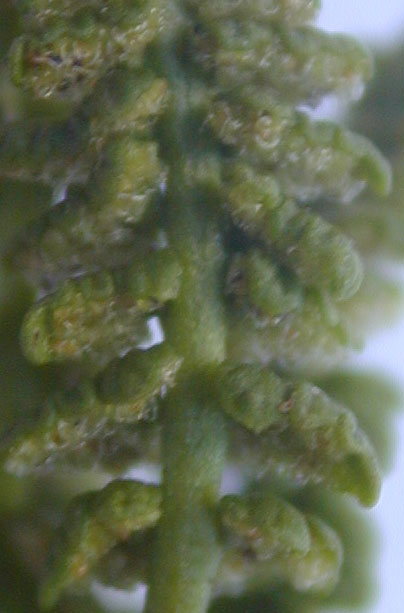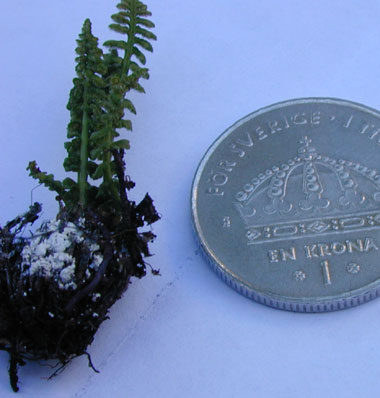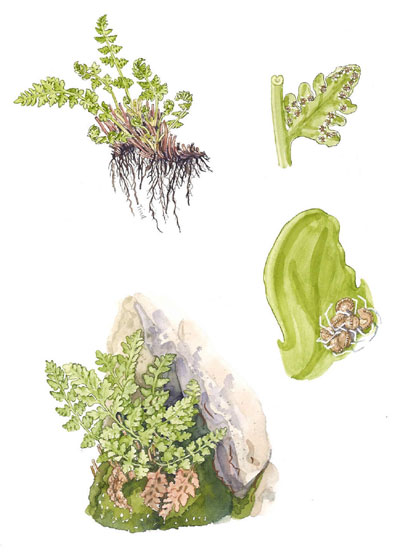| Woodsia glabella | ||
Smooth cliff fern, smooth woodsia | ||
|
Etymology
Glabella is the diminutive form of the Latin word glaber, meaning without hair.
Description
Rhizome: erect, compact, with abundant persistent petiole bases of � equal length, scales uniformly brown, lanceolate.
Frond: 10 cm high by 2 cm wide, deciduous, monomorphic, blade/stipe ratio: 3:1. Stipe: persistent base, green or straw-colored throughout, jointed above base at swollen node, scales broadly lanceolate, to 4 mm, yellow-brown at base, glabrous above the joint, vascular bundles: 2, round or oblong. Blade: 1-pinnate-pinnatifid, linear to linear-lanceolate, pale green, glabrous. Pinnae: 7 to 9 pair, sessile, upper pinnae decurrent to rachis, largest pinnae with 1--3 pairs of pinnules, lower pinnae sometimes semicircular; costae grooved above, grooves continuous from rachis to costae; margins entire or crenate, often folding downwards, margins also hairy; veins free, simple or forked. Sori: round, 1-3 near the sinus between pinna segments, indusium: shallowly saucer-shaped, almost dissected into hairs, basal, surrounding, sporangia: brownish, maturity: mid to late summer. Culture
Habitat: moist crevices, scree, on limestone.
Distribution: circumboreal, south to Pyrenees, Himalayas, Great Lakes.
Hardy to -40�C, USDA Zone 2, requires a cool summer.
Distinctive Characteristics
Smallest of all the woodsias, and the only one without hairs or scales above the joint on the stipe.
Synonyms
Woodsia alpina (Bolton) Gray var. glabella (R. Brown ex Richardson) D. C. Eaton Woodsia hyperborea (Liljeblad) R. Brown ex Richardson var. glabella (Richardson) Watt |
|
|

Woodsia glabella. Height is about 1 cm. See the typical sorus nearing maturity�at top left. �Photo: Tom Stuart |

Woodsia glabella. This Woodsia is small. The specimen is from the Arctic coast of Norway. �Photo: Tom Stuart |
